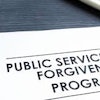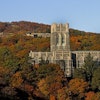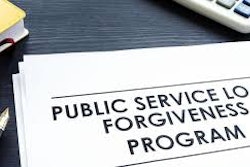Poor Strategies Continue to Plague Black Test-Takers Officials from the College Board announced last month that this year’s national average SAT math score is at a 30-year high, but African American test-takers still came in with the lowest average among ethnic groups for the test’s math section.
Although math scores for all ethnic groups have increased since 1990, African American students scored an average 426 out of a possible 800.
African American test-takers on average scored 434 — also out of a possible 800 — on the verbal portion of the SAT, up from 428 in 1990. However, their scores were again the lowest.
“The biggest challenge in higher education is closing the achievement gap,” says Gaston Caperton, president of the College Board. Caperton says the widening gap has nothing to do with students’ potential, and that College Board officials have committed to getting more Advanced Placement courses in high schools.
More students than ever before are taking four or more years of math and science, which helps explain the overall increase in math scores, say College Board officials. They note that the three-point gain brings the average math score up to 514.
“Over the last decade, male and female students from all ethnic backgrounds have been taking more pre-calculus, calculus and physics,” Caperton says. “These are some of the most rigorous courses available, and help students develop excellent math skills. The SAT math scores of students who take these courses are well above the national average.”
The average national SAT verbal score has remained stable at 505 for the fifth consecutive year. Caperton says this is partly due to the changing demographics — the growing number of foreign-born students taking the test as well as native students for whom English is a second language. Since 1987, when the College Board began tracking such data, the number of foreign-born and first-generation American test-takers has increased by 47 percent — nearly three times the growth rate of the entire SAT test-taking population. In addition, Caperton says, children are not reading as much as they used to.
The downfall, College Board officials say, is that schools are not equal in rigor or in opportunities. Therefore, some students are not able to take advantage of opportunities that would otherwise better prepare them for testing.
But the College Board’s report of a three-point increase on the SAT, which is the most widely used placement exam, is equivalent to getting one-third of a question correct and fairly insignificant, according to Dr. Gary Gruber, who has written more than 30 books on test preparation, including Gruber’s Preparation for the New SAT and Dr. Gary Gruber’s Essential Test Taking for Kids. “This is an embarrassment to the nation,” Gruber says of the increase.
Through his own research, Gruber has found that different ethnic groups use different test-taking strategies and says that if African American students, as well as all students, were taught effective testing strategies, their scores would increase.
“There’s no reason why African Americans, if given the same opportunities, could not score higher,” Gruber says.
Gruber also helped design the SAT prep courses for TestU.com, an education company that offers online prep courses for various achievement tests such as the ACT, PSAT and the SAT. TestU.com is currently partnering with the National Urban League and various Boys and Girls Clubs to make sure they have access to the Internet and TestU.com.
“The gaps among different ethnic groups are widening,” Gruber says. “Getting one-third of a question correct is not a time to rejoice but a time to examine how we can really impact students’ scores across the board, not just for those who can afford high-cost test prep courses.”
Of the record 1.26 million students who took the Scholastic Achievement Test in 2000, 44 percent had taken a pre-calculus course, compared with 31 percent in 1990. During the same period, the percentage of SAT takers who had studied calculus rose from 19 percent to 24 percent and the proportion who had taken physics courses grew from 44 percent to 49 percent.
The largest increases in
college-prep coursework occurred among minority groups whose average SAT scores have historically lagged behind those of Whites and Asians: Blacks, American Indians and Mexican Americans gained four points in math.
© Copyright 2005 by DiverseEducation.com


















